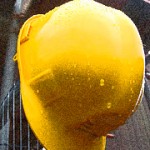According to the CDC, poison ivy is a common poisonous plant found throughout the United States. It can be found in forests, swamplands, roadsides, backyards and even in urban environments. That means, wherever you are, poison ivy could be right there! And, its not always easy to spot. When trying to identify this plant, consider the species, the season and your geographical location as the physical characteristics can vary. Being able to recognize local varieties, especially at a work site, is your key to avoiding exposure.
Poison ivy produces a liquid called urushiol, this is the so called active ingredient that causes the itching, blisters and rashes in most people who touch it. Outdoor workers can be exposed to poison ivy in multiple ways:
- Physical contact with the plant (including the roots!)
- Touching tools, equipment or livestock that have been in contact with the plant
- Inhaled aerosolized particles from burning the plant.
Recognition
Your ability to recognize poison ivy is the first step in preventing exposure. Depending upon where you live and the season, the plant can vary widely. It always has three leaves (like many other plants) but the size, shape and coloring may fool you. The following links provide some pictures and other useful information to help you identify the poison ivy lurking in your work place:
- USDA Invasive and Noxious Plants Guide
- Poison Ivy Guide
- USDA Federal and State Noxious Weed Guide
- Great Plains Nature Center
Prevention
When working in areas infested with this wicked plant, personal protective equipment (PPE) like gloves and boots, long sleeve shirts and long pants tucked into boots will help. Be extra careful to not touch the exposed clothing when removing it and wash it in the hottest water possible using copious amounts of soap and water with lots of room to agitate. If youre not sure wash it again as you can get a rash from clothing or tools that have the urushiol resin from even years back!
Always wash your skin with plenty of soap and cold water after exposure. (Hot water opens your pores and lets the resin absorb into your skin.) If you can get scrubbing within ten minutes of contact, you may have dodged the poison ivy bullet! And, always clean all tools and equipment that come in contact with the plant with soap, water and a bleach solution to avoid re-exposure.
Follow comprehensive decontamination methods treat the urushiol resin as a chemical contaminant!
First Aid
How do you know you have poison ivy? Advice from the Mayo Clinic includes
Signs and symptoms of a poison ivy rash include:
Often, the rash looks like a straight line because of the way the plant brushes against the skin. But if you come into contact with a piece of clothing or pet fur that has urushiol on it, the rash may be more spread out. The reaction usually develops 12 to 48 hours after exposure and can last up to eight weeks. The severity of the rash is dependent on the amount of urushiol that gets on your skin.
Once you know youre exposed, wash exposed skin with plenty of soap and cold water to break down and encapsulate the oil. Web MD advises these additional steps:
An alternative is rubbing alcohol, which can dissolve and remove the oils from your skin. If you can remove the oil within 10 minutes, you are unlikely to develop the rash. Symptoms from a mild rash can sometimes be relieved by the following:
- Cool compresses with water or milk
- Calamine - A nonprescription lotion
- Aveeno oatmeal bath - A product you put in the bath to relieve itching
And, of course, if the reaction seems to be severe, is spreading or lasting longer than a few weeks, ask for immediate professional medical attention.
Three leaves? Be cautious!
At Emilcott, we frequently run into job sites with high potential for poison ivy exposure think about the uncleared, overgrown or unkempt places that surveyers, highway workers, laborers, HazWOPER workers, engineers, inspectors, construction workers, and landscapers, often find themselves! And dont think that youre immune either. My coworker, Paula Kaufmann, CIH, wrote about her overconfidence that she had not been sensitized to urushiol (and thought she was immune and her inevitable reaction to repeated exposure. Maybe she should have paid attention to Emilcotts poison ivy awareness and other outdoor hazards that is a part of many of our health and safety training courses!
Have you had an experience with poison ivy on the job? Were you prepared ahead of time? If not, what happened?












